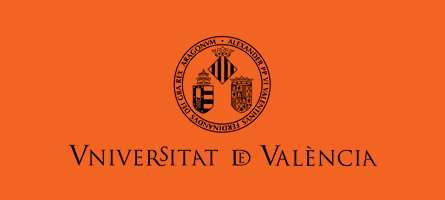Visual Communication strategy of populist leaders on Instagram in 2020
DOI:
https://doi.org/10.7203/drdcd.v1i8.238Resumen
In recent years social media platforms, especially Instagram, have become one of the most crucial elements of visual political communication strategies, assisting politicians with creating their visual image in the minds of citizens. At the same time, the strengthening of the populist trend in the modern political landscape is noted in many countries in different parts of the world. The present study examines the virtual visual strategy of 12 populist leaders in democratic states in 2020 with the use of digital methods. In this study the type of content populists publish in their Instagram profiles is determined, comparative analysis between populists in different states is conducted as well as the engagement analysis and textual analysis with the focus on the COVID-19 rhetoric. It was revealed that populist leaders post pictures that communicate personal and national power. While showing how strong and reliable they are, they also portray themselves as ordinary citizens.
Citas
Chao, J. (2021). “Memespector GUI: Graphical User Interface Client for Computer Vision APIs [Computer Software] (Version 0.1)” [C#] (Original work published 2021). https://github.com/jason-chao/memespector-gui
D’Andréa, C. and Mintz, A. (2021). “Investigating cross-platform visual issuefication.” #SMARTDataSprint. https://smart.inovamedialab.org/past-editions/2021-platformisation/project-reports/investigating-cross-platform/
Dittrich, P. J. and the Jacques Delors Institut. (2017). “Social networks and populism in the EU. Four things you should know.” https://institutdelors.eu/wp-content/uploads/2020/08/socialnetworksandpopulism-dittrich-jdib-april17-2.pdf
Ekman, M. and Widholm, A. (2017). “Political Communication in an age of visual connectivity: Exploring Instagram practices among Swedish politicians.” Northern Lights: Film & Media Studies Yearbook, 15(1), 15–32.https://doi.org/10.1386/nl.15.1.15_1
Farkas, X. and Bene, M. (2021). “Images, Politicians, and Social Media: Patterns and Effects of Politicians’ Image-Based Political Communication Strategies on Social Media”. The International Journal of Press/Politics, 26(1), 119–142. https://doi.org/10.1177/1940161220959553
Gordillo-Rodríguez M.T. and Bellido-Pérez, E. (2021). “Politicians self-representation on Instagram: the professional and the humanized candidate during 2019 Spanish elections.” Observatorio, 15(1), 109-136.
Hand, M. (2012). “Ubiquitous photography”. UK: Polity Press.
Influencer Marketing Hub. (2021). Influencer Marketing Benchmark Report https://influencermarketinghub.com/ebooks/influencer_marketing_benchmark_report_2021.pdf
Kenny, P. D. (2021). “The strategic approach to populism”. In D. B. Subedi, T. Lynch, A. Scott, & H. Brasted (Eds.), Handbook on populism in the Asia Pacific. Routledge.
Kyle, J. and Meyer, B. (2020). “High Tide? Populism in Power, 1990–2020”. Institute for Global Change. https://institute.global/policy/high-tide-populism-power-1990-2020
Lalancette, M. and Raynauld, V. (2017). “The power of political image: Justin Trudeau, Instagram, and celebrity politics.” American Behavioral Scientist, 63(7), 888–924. https://doi.org/10.1177/0002764217744838
Maarek, P. J. (2014). “Politics 2.0: New Forms of Digital Political Marketing and Political Communication.” Tripodos, 1(34), 13-22. http://www.tripodos.com/index.php/Facultat_Comunicacio_Blanquerna/article/view/163
Miller-Idriss, C. (2019). “The Oxford Handbook of Populism”, edited by Cristóbal Rovira Kaltwasser, Paul Taggart, Paulina Ochoa Espejo, and Pierre Ostiguy. Populism, 2(2), 247–251. https://doi.org/10.1163/25888072-02021036
Mudde, C. and Rovira Kaltwasser, C. (2018). “Studying Populism in Comparative Perspective: Reflections on the Contemporary and Future Research Agenda.” Comparative Political Studies, 51(13), 1667–1693. https://doi.org/10.1177/0010414018789490
Omena, J. J. and Amaral, I. (2019). “Sistema de leitura de redes digitais multiplataforma.” In Janna Joceli Omena (Ed.), Métodos Digitais: Teoria-Prática-Crítica (pp. 121–140). Lisbon: ICNOVA.
Omena, J. J., Elena, P., Gobbo, B., & Jason, C. (2021). “The Potentials of Google Vision API-based Networks to Study Natively Digital Images”. Revista Diseña, 19. https://doi.org/10.7764/disena.19.article.1
Ostiguy, P. (2009). “The high and the low in politics: a two-dimensional political space for comparative analysis and electoral studies”. Kellogg Institute, https://kellogg.nd.edu/sites/default/files/old_files/ documents/360_0.pdf
Page, J. T. and Duffy, M. E. (2016). “What does credibility look like? tweets and walls in U.S. presidential candidates’ visual storytelling.” Journal of Political Marketing, 17(1), 3–31. https://doi.org/10.1080/15377857.2016.1171819
Russmann, U., Svensson, J., & Larsson, A. O. (2019). “Political parties and their pictures: Visual Communication on Instagram in Swedish and Norwegian election campaigns.” Visual Political Communication, 119–144. https://doi.org/10.1007/978-3-030-18729-3_7
Schill, D. (2012). “The Visual Image and the Political Image: A Review of Visual Communication Research in the Field of Political Communication.” Review of Communication, 12(2), 118–142.https://doi.org/10.1080/15358593.2011.653504
Spiekermann, Kai (2020). “Why Populists Do Well on Social Networks.” Global Justice: Theory Practice Rhetoric 12 (2):50-71.
Stout, D. W. (2021). “Social Media Statistics 2022: Top Networks By the Numbers. Dustin Stout.” https://dustinstout.com/social-media-statistics/
Strand, R. T. and Schill, D. (2019). “The Visual Presidency of Donald Trump’s First Hundred Days: Political Image-Making and Digital Media.” In A. Veneti, D. Jackson, & D. G. Lilleker (Eds.), Visual Political Communication (1st ed. 2019 ed., pp. 167–187). Springer International Publishing. https://doi.org/10.1007/978-3-030-18729-3
Venturini, T., Jacomy, M., & Jensen, P. (2019). “What Do We See When We Look at Networks. An Introduction to Visual Network Analysis and Force-Directed Layouts.” SSRN Electronic Journal. https://doi.org/10.2139/ssrn.3378438
Weyland, K. (2020). “Populism’s Threat to Democracy: Comparative Lessons for the United States.” Perspectives on Politics, 18(2), 389–406. https://doi.org/10.1017/s1537592719003955
Descargas
Publicado
Número
Sección
Licencia
Los autores conservan los derechos de autor y garantizan a la revista el derecho de ser la primera publicación del trabajo, licenciado bajo una Creative Commons Attribution License que permite a otros compartir el trabajo con un reconocimiento de la autoría del trabajo y la publicación en esta revista.
Cuando el autor/a envía su colaboración está explicitamente aceptando esta cesión de derechos de edición y de publicación. Igualmente autoriza a Dígitos la inclusión de su trabajo en un número de la revista para su distribución y venta.







